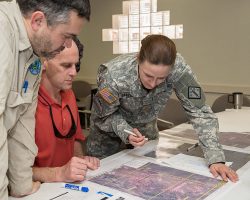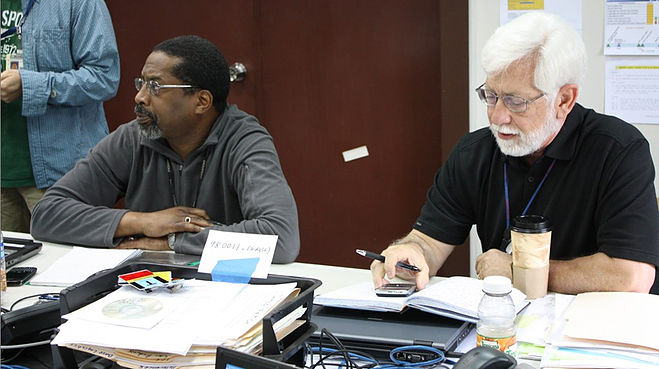 EMSI recently completed development and delivery of a new crisis and incident leadership course for the Department of Energy/National Nuclear Security Administration (DOE/NNSA). The course, intended for Senior Energy Officials from the DOE/NNSA Office of Nuclear Incident Response, focused on crisis and incident leadership challenges the DOE/NNSA Senior Energy Official may encounter during a nuclear or radiological counter-terrorism or emergency response situation.
EMSI recently completed development and delivery of a new crisis and incident leadership course for the Department of Energy/National Nuclear Security Administration (DOE/NNSA). The course, intended for Senior Energy Officials from the DOE/NNSA Office of Nuclear Incident Response, focused on crisis and incident leadership challenges the DOE/NNSA Senior Energy Official may encounter during a nuclear or radiological counter-terrorism or emergency response situation.
The course focused on:
-
Differences between management and leadership
-
Self-awareness and emotional intelligence
-
Creating a positive command climate and exhibiting command presence
-
Team building and staff management
-
Developing and communicating leader’s intent and command direction
-
Crisis and time-compressed decision-making
-
Ability to lead vs. authority to lead (leading the effort)
With unmatched technical expertise, DOE/NNSA Senior Energy Officials often find themselves in a situation where they are expected to influence response actions and assist in obtaining a positive end-state and outcome, with little formal authority to do so. In this regard, Senior Energy Officials rely on their ability to lead, derived largely from the technical expertise they represent. They become more than simply leaders of people and teams, but they are leaders of effort, a form of meta-leadership.
As leaders of effort, they work to leverage their expert power and credibility to harmonize unity of effort among multiple organizations working towards a similar objective. Leveraging the positive command climate they have established within their direct area of responsibility and formal lines of authority, the leader of effort, with little or no authority or position power to lead beyond their direct responsibility, broadens their sphere of influence by convincing others to trust and follow them, and join their effort. This prevents organizations from working incongruently on a particular aspect of a response and reduces duplication and friction points. Through shared values and vision, priorities and objectives, multiple organizations can achieve a unity of effort under the leader of the effort to achieve more as a collective.
Among the class participants were several veterans of the DOE/NNSA response to the Fukushima Daiichi nuclear accident. During this crisis in 2011, DOE/NNSA personnel deployed to Japan for nearly three months to provide technical assistance to the U.S. Department of Defense, U.S. Department of State, and the Government of Japan, leading the U.S. Government’s radiological response efforts.
EMSI has provided incident leadership and management training and support to DOE since 2007 and routinely provides support to DOE exercises, including coaching and mentoring. In 2011, EMSI Vice President of Operations Billy Haley responded to Japan with DOE as part of the U.S. Government’s response. For his contributions, Billy earned the DOE Secretarial Honor Award and the U.S. Agency for International Development (USAID) Meritorious Group Award.
EMSI continues to grow our incident leadership training and development program, creating customized leadership development programs for our clients. Drawing upon our cadre of seasoned response professionals, EMSI brings practical experience to the leadership development process leveraging considerable real-world experience. Many of the EMSI cadre members have functioned as Area Commanders, Incident Commanders, and other Command and General Staff positions on Type 1 National Incident Management Teams that have managed large, all-risk, all-hazard incidents throughout the United States and the world. Our cadre members are proven leaders, whether it is general leadership in a routine environment or it is incident leadership in a chaotic incident or crisis environment, having lead responders in some of the most complex and stressful incidents.
To learn more about how EMSI can help your organization, contact us today.



